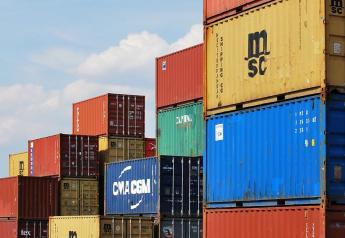Dan Murphy: Alt-Meat’s Catch 22

I have to give credit to the start-up companies that have leveraged the breakthrough technology used to produce the growing list of products in what I’ve broadly labeled the “alt-meat” category.
That’s because collectively, these entrepreneurial operators have garnered way more publicity than would be expected, given the actual amount of product that they’ve manufactured.
As an example, consider the boutique, or craft beer producers, who have arguably revolutionized the beer industry. While there continue to be new entrants to the category and plenty of new varieties and styles being introduced on a regular basis, media coverage is subdued.
That’s partly because some of the novelty has worn off, but it’s also because even decades after the first wave of specialty brews hit the market, the total volume of craft beers in the U.S. is barely more than 12.5% of total sales. The other nearly 90% of the market is conventional beer produced by the multinational name-brand breweries.
Yet despite the fact that alt-meat sales are not 12% but somewhere south of 0.012% of total meat volume, the category is being lionized as the second coming of boxed beef, ie, a revolutionary new production process that will trigger a wholesale restructuring of the industry.
At least that’s how the drivers of the alt-meat category self-describe their mission. Consider how Impossible Foods, which markets the Impossible Burger, positions itself:
“Using animals to make meat is a prehistoric and destructive technology. Animal agriculture occupies almost half the land on earth, consumes a quarter of our freshwater and destroys our ecosystems. So we found a way to make meat using plants. That way, we can eat all the meat we want, for as long as we want. And save the best planet in the known universe.”
Sounds fantastic — right up until the part about eating all the meat we want.
Supply, not demand. That’s the crux of the challenge, and the constraints, facing alt-meat manufacturers.
A Tiny Ripple in a Gigantic Pond
As production ramps up for Impossible and other “cultured meat” companies in their category, expectations are that economies of scale will allow them to market their products more competitively. However, the ingredients needed to increase that production — the wheat gluten and purified plant proteins — have to be diverted from other applications.
That will raise ingredient prices and constrain the expansion of production, which would seemingly jeopardize the ambitions of Impossible and its alt-meat brethren to revolutionize the meat industry while saving Planet Earth from the attack of the cows.
No doubt that cultured meat analogs — ie, meat-like foods made from plant-based substrates — will become more and more popular, especially with younger people. But it's a long way off, if it ever comes to pass, when cellular agriculture replaces animal agriculture — at least not until production increases exponentially and prices drop drastically.
One other factor to consider here.
In considering the decline in per-capita consumption of red meat in North America and Western Europe, media coverage of meat production’s eco- impact, as well as the public’s ongoing concern with animal welfare, are key factors.
But those concerns, in my opinion, are the principal drivers of purchasing preferences for but a small fraction of consumers. Price and value are far more important factors in determining what people put into their shopping carts or order at foodservice establishments. If ground beef, for example, were suddenly available everywhere for 99 cents a pound, I’d bet the farm that people would be buying a lot more of it, no matter where they stood on environmental and animal welfare issues.
It’s one thing to pronounce your concerns about the environment and about animal welfare. It’s quite another to make hard calculations about how to spend a family's weekly food budget.
But why are prices for meat and poultry so strong, if consumption is on the decline? Collectively, Americans and Europeans are eating significantly less beef and pork. For all the guilt-tripping about going meatless in which veganistas love to engage, the populations of the world’s more affluent countries are already onboard the “eat less meat” bandwagon.
It’s the other 6 billion-plus people on Earth who are driving global demand, thus keeping prices high, even as Westerners continue to consume less meat than previous generations.
Which brings us back to Impossible Burger and the other cultured meat manufacturers. The principals of those start-ups can crow all they want about how wonderful their technology is. But if most of the population — even in developed countries — cannot afford their products, how is that going to create dietary change sufficient to impact global warming or resource depletion on the scale that's needed?
What these new-wave entrepreneurs are doing, at least so far, is no different from the established marketers who buy the reams of advertising stuffed into men’s and women’s “lifestyle” magazines: Selling high-priced luxury items the average middle-income family simply can’t afford.
The alt-meat entrepreneurs’ main mission is making money, and their (nearly) shameless pursuit of “celebrity investors” is evidence not of a commitment to make substantive changes in the world’s dietary options, but rather the pursuit of the same routine that wealthy people everywhere always follow: Invest your money to make more money.
That’s not to be condemned, but it’s not to be lionized, either.
Editor’s Note: The opinions in this commentary are those of Dan Murphy, a veteran journalist and commentator.







